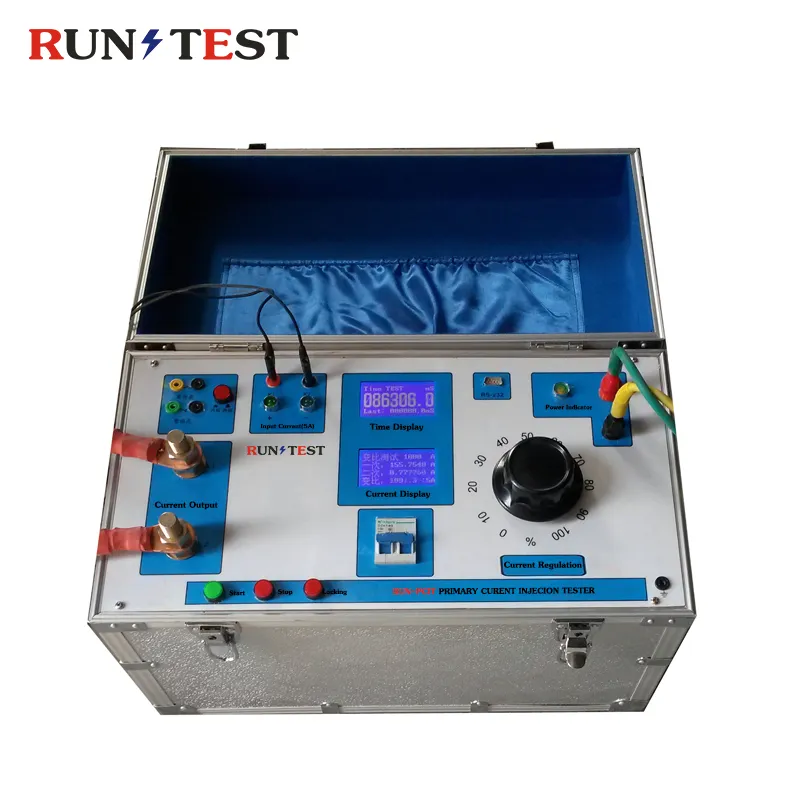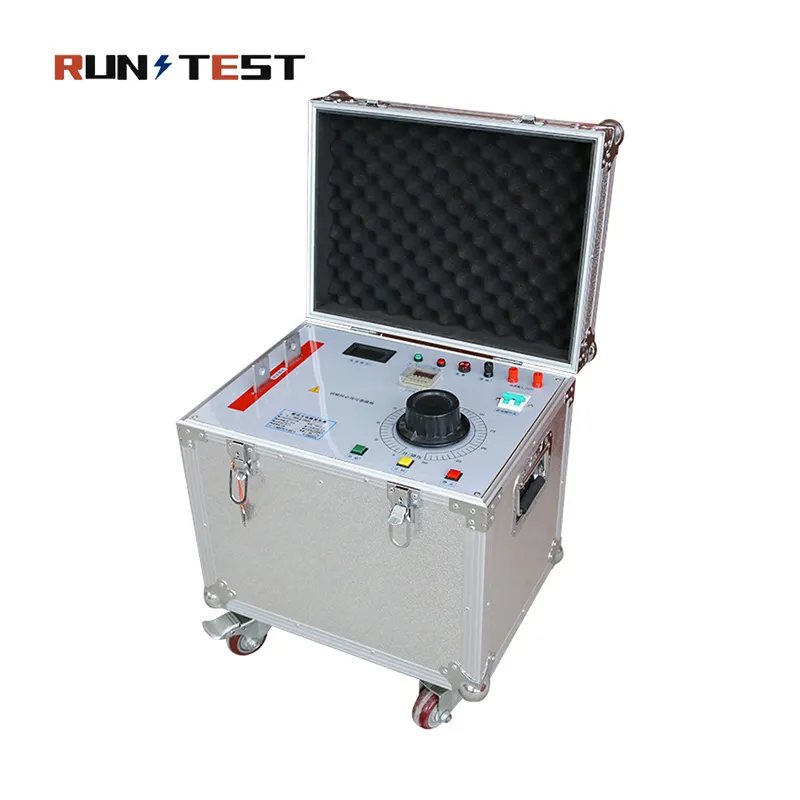gerador de corrente primária
A Gerador de corrente primária (which is in the Conjunto de teste de injeção de corrente primária)is a device used to generate a known, stable electrical current for testing and calibration purposes in electrical systems. It is commonly used in applications such as testing the operation of protective relays, current transformers (CTs), and other measuring devices, ensuring that they function accurately under specified conditions.
-

Gerador de corrente grande Instrumento de teste de injeção de corrente primária 1000A
-

Injetor de corrente primária de grandes dimensões/Gerador de alta corrente integrado primário
Purpose and Advantages of a Primary Current Generator
Purpose of a Primary Current Generator
The primary job of a primary current generator is to send a steady, adjustable current to the electrical parts we’re testing. We use these generators when we need highly accurate and consistent results, especially in these situations:
- Protective Relay Testing: We apply the expected current to check if protective relays work properly. This ensures they’ll respond correctly during real electrical problems.
- Current Transformer (CT) Testing: CTs could create a pathway with the low current levels for measuring the protection or generation. We could test the CTs to determine that they work well and that they could perform their duties.
- Calibration of Measurement Instruments: We could employ primary current generators for the purpose of verifying the ammeters, wattmeters, and other electrical value measurement instruments. By doing so, we could see to it that these instruments indicate correctly.
- Testing of Circuit Breakers: We check if circuit breakers can handle the fault currents they might face and operate within the set time limits. This way, we know they’ll protect the system during electrical faults.
Advantages of Primary Current Generators
- Accurate Testing: These generators let us test protective devices reliably. We can be confident that these devices will work right when actual faults occur.
- Versatility: They can produce both AC and DC currents. This flexibility makes them useful for many different applications, from simple tests to complex electrical projects.
- Efficiency: Primary current generators help us test and calibrate electrical systems fast. We can finish the work quickly, reducing downtime and making the systems more reliable.
- Durabilidade: Built tough, these generators can handle the rough conditions of field testing. They’re made to last, so we can use them for a long time without worry.
Primary current generators are essential for testing and verifying electrical systems. Be it protective relays, current transformers, circuit breakers, or any other devices, they are the ones that allow us to mimic fault currents accurately. Their great functionality and full control of the currents can be a great help to us to be sure that electrical protection and measurement systems are really fine and that no damage is done to the equipment.
